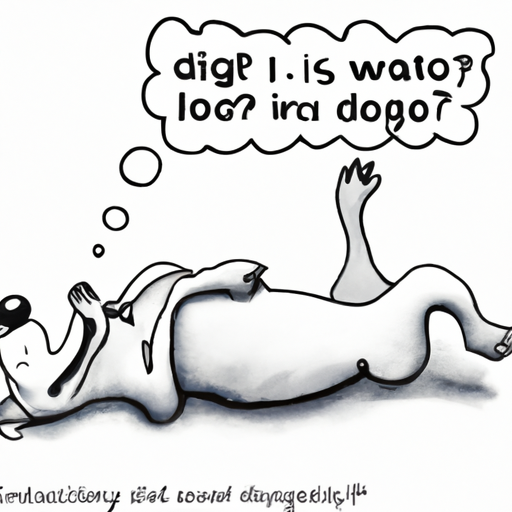If you’ve ever spent some time with our furry friends, you’ve probably noticed a peculiar behavior. When certain spots on their bodies are scratched, they start shaking their leg in a rhythmic motion. As a caregiver, you might have found this behavior endearing, amusing, or maybe even a cause for concern. This article aims to unravel the mystery behind this fascinating canine behavior.
Table of Contents
- Understanding Canine Anatomy
- The Scratch Reflex: A Biological Response
- Is It Harmful?
- Other Reasons for Leg Shaking in Dogs
- FAQs
Key takeaways
- Dogs shake their leg when scratched due to a biological response known as the scratch reflex.
- Understanding canine anatomy can help us appreciate this interesting behavior.
- Leg shaking is not harmful unless it is excessive or paired with other concerning symptoms.
- Leg shaking in dogs can also be a sign of medical conditions that require veterinary attention.
Understanding Canine Anatomy
To understand why dogs shake their leg when scratched, we first need to delve a bit into canine anatomy. Dogs have a complex network of nerves underneath their skin. When you scratch a certain spot on a dog’s body, these nerves send a signal to the brain, which then sends a signal to the muscles in the leg causing them to twitch or shake. Here’s a deeper dive into the fascinating world of canine anatomy.
The Scratch Reflex: A Biological Response
The main reason why dogs shake their leg when scratched is due to a biological response known as the scratch reflex. This reflex is an automatic response to an itch or tickle. It’s similar to the reflex in humans that causes us to jerk our hand away from something hot.
The scratch reflex is more pronounced in certain areas where the skin is thinner and the nerves are closer to the surface, such as the belly or the area behind the ears. This article explains the scratch reflex in more detail.
Is It Harmful?
As a caregiver, it’s natural to wonder if this leg shaking behavior is harmful to your pet. Generally, the scratch reflex is not harmful. It’s simply the dog’s way of responding to an itch or tickle. However, excessive scratching or shaking could indicate a skin irritation or allergy. If you notice your dog is scratching or shaking more than usual, it’s best to consult with a veterinarian. Here’s more information on recognizing and treating common skin issues in dogs.
Other Reasons for Leg Shaking in Dogs
While the scratch reflex is the most common reason for dogs to shake their leg when scratched, it’s not the only one. Here are a few other reasons:
- Excitement or Anxiety: Dogs sometimes shake their legs when they are excited or anxious. This is often paired with other signs of these emotions, such as panting or whining.
- Cold: Just like humans, dogs can shake or shiver when they’re cold.
- Medical Conditions: Certain medical conditions, such as Canine Compulsive Disorder or neurological disorders, can cause leg shaking in dogs.
If your dog’s leg shaking is frequent, accompanied by other symptoms, or causing distress, it’s important to seek veterinary care. Here’s what you need to know about common neurological disorders in dogs.
Frequently Asked Questions
Q: Why does my dog shake his leg when I scratch his belly?
A: This is due to the scratch reflex. The belly is a sensitive area where the nerves are close to the surface, making the reflex more pronounced.
Q: Is it harmful for my dog to shake his leg when scratched?
A: Generally, no. However, excessive shaking could indicate a skin irritation or allergy.
Q: Should I stop scratching my dog if his leg shakes?
A: Not necessarily. If your dog is enjoying the scratch and is not showing signs of distress, it’s usually okay to continue.
Q: My dog shakes his leg even when not being scratched. Should I be worried?
A: If your dog’s leg shaking is frequent, accompanied by other symptoms, or causing distress, it’s best to consult with a veterinarian.
Understanding our four-legged friends’ behaviors helps us bond with them and provide the best care possible. So the next time you see your pooch shaking a leg while being scratched, you’ll know it’s all part of being a dog.



